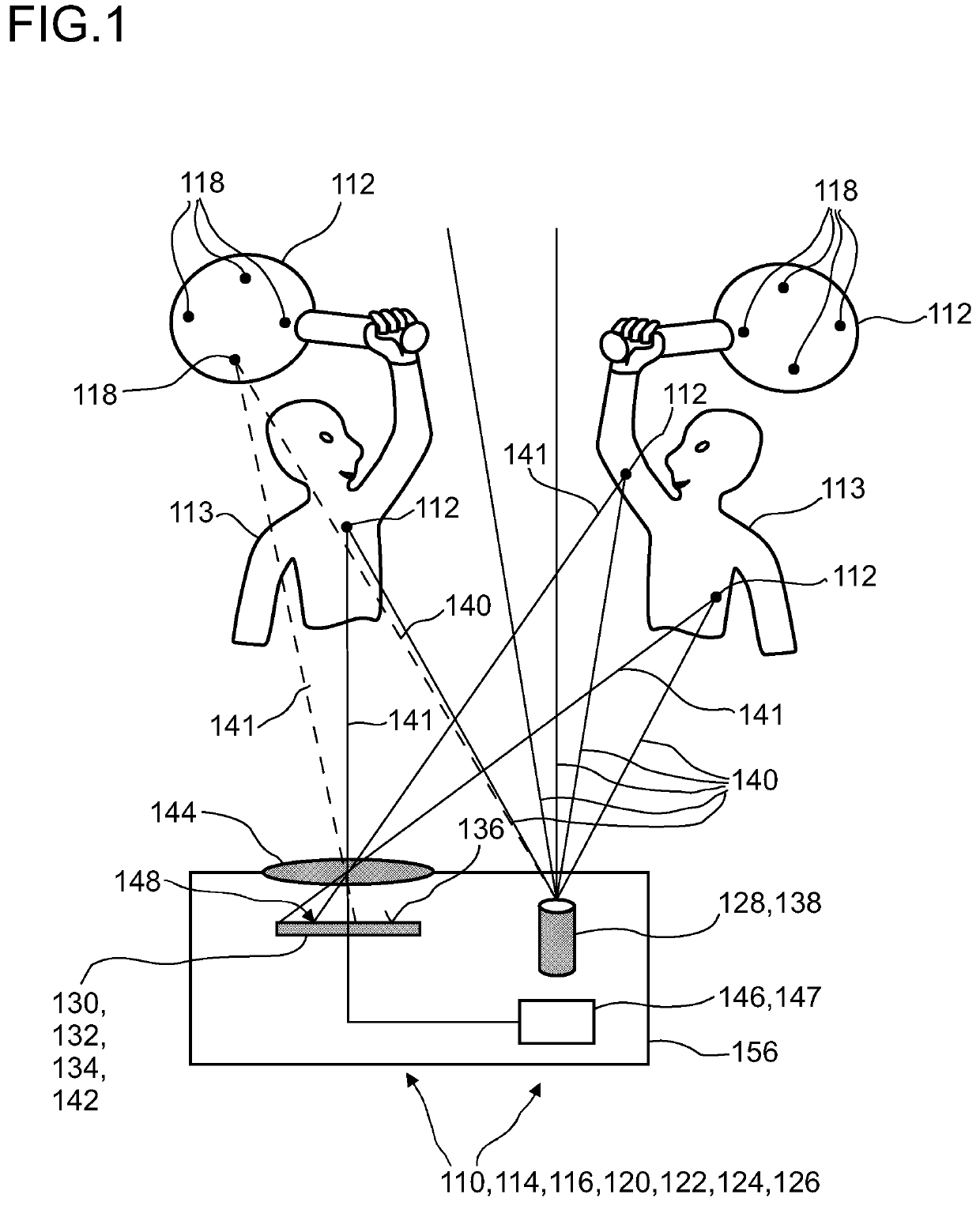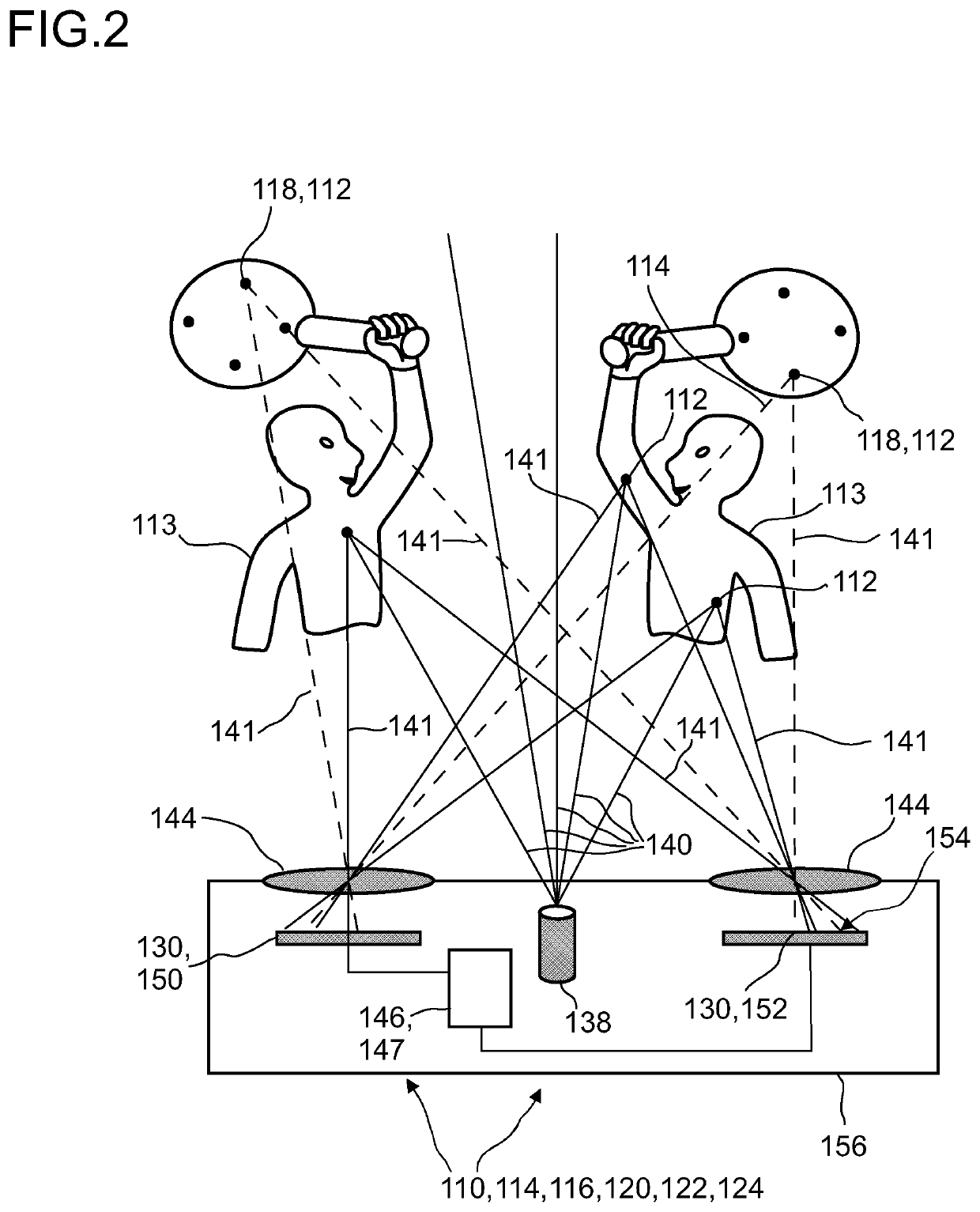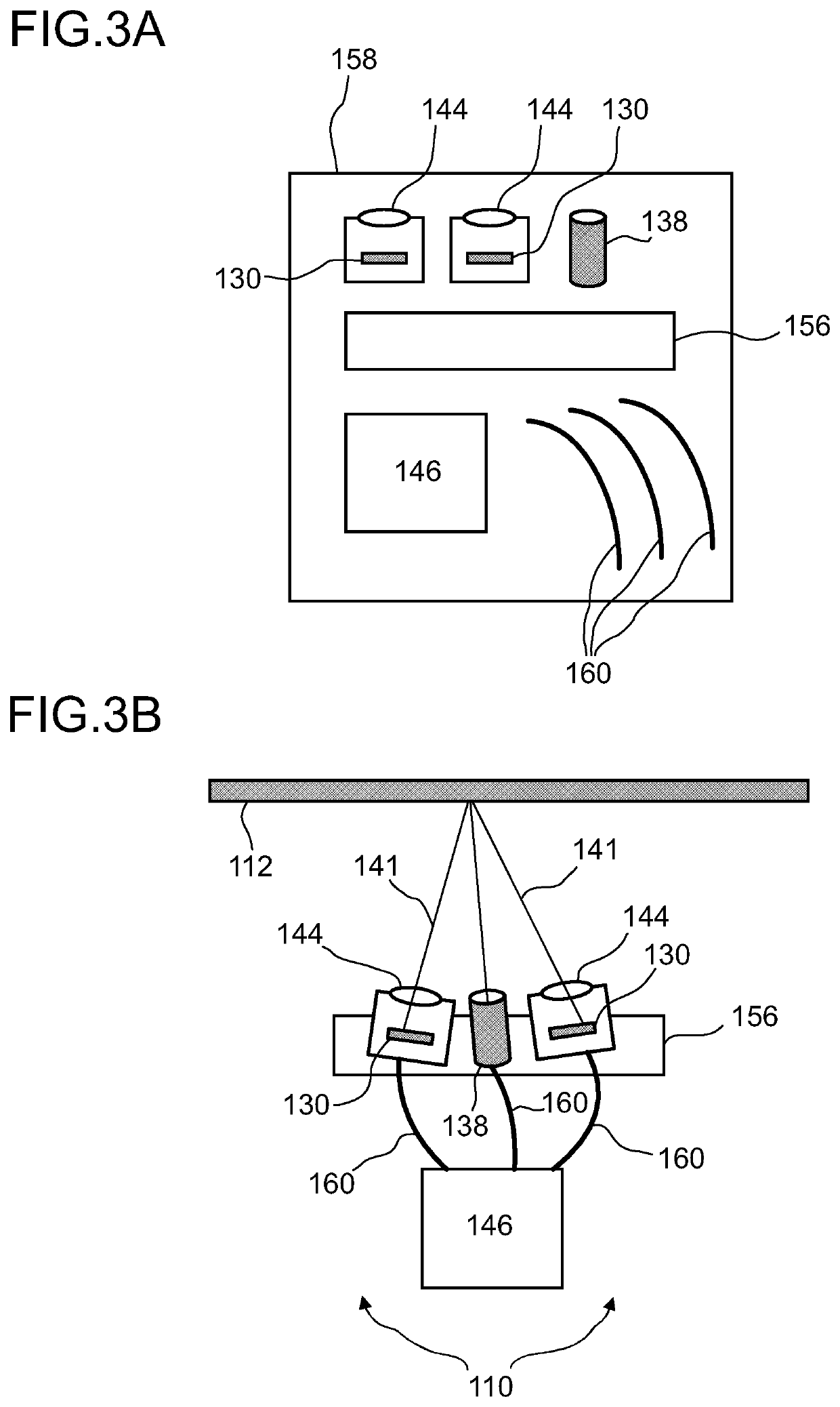Detector for determining a position of at least one object
a technology a detector, applied in the field of detectors for determining the position of at least one object, can solve the problems of high computational power demand, high cost of processors or field programmable gate arrays (fpgas), electrical power consumption, etc., and achieve the effect of reducing the possible number of solutions, reducing computational demand, and reducing costs
- Summary
- Abstract
- Description
- Claims
- Application Information
AI Technical Summary
Benefits of technology
Problems solved by technology
Method used
Image
Examples
first embodiment
[0375]FIG. 1 shows, in a highly schematic illustration, a detector 110 for determining a position of at least one object 112. The detector 110 specifically may be embodied as a camera 114 and / or may be part of a camera 114. The camera 114 may be made for imaging, specifically for 3D imaging, and may be made for acquiring standstill images and / or image sequences such as digital video clips. Other embodiments are feasible. FIG. 1 further shows an embodiment of a detector system 116, which, besides the at least one detector 110, comprises one or more beacon devices 118, which, in this example, may be attached and / or integrated into an object 112, the position of which shall be detected by using the detector 110. FIG. 1 further shows an exemplary embodiment of a human-machine interface 120, which comprises the at least one detector system 116 and, further, an entertainment device 122, which comprises the human-machine interface 120. FIG. 1 further shows an embodiment of a tracking syste...
second embodiment
[0424]FIG. 2 shows the detector 110, detector system 116, camera 114, entertainment device 122 and tracking system 124. With respect of detector 110, detector system 116, camera 114, entertainment device 122 and tracking system 124 reference is made to the description of FIG. 1. In addition to FIG. 1, in this embodiment, the detector 110 may comprise two sensor elements 130, a first sensor element 150 and a second sensor element 152. The first sensor element 150 and the second sensor element 152 may be connected by a mechanical connector 156. The mechanical connector 156 may be adjustable and / or non-permanent. Some points may be illuminated by the optional illumination source 138 and may be detected by both sensor elements 130. The evaluation device 146 may be configured for determining the longitudinal coordinate z of the object 112 by evaluating the combined signal Q from at least two sensor signals of the first sensor element 150 and / or of the second sensor elements 152. The firs...
PUM
 Login to View More
Login to View More Abstract
Description
Claims
Application Information
 Login to View More
Login to View More - R&D
- Intellectual Property
- Life Sciences
- Materials
- Tech Scout
- Unparalleled Data Quality
- Higher Quality Content
- 60% Fewer Hallucinations
Browse by: Latest US Patents, China's latest patents, Technical Efficacy Thesaurus, Application Domain, Technology Topic, Popular Technical Reports.
© 2025 PatSnap. All rights reserved.Legal|Privacy policy|Modern Slavery Act Transparency Statement|Sitemap|About US| Contact US: help@patsnap.com



